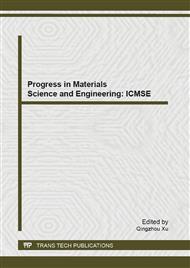p.621
p.626
p.632
p.639
p.645
p.650
p.655
p.662
p.668
Study on Absorbing Properties of Honeycomb Absorbing Materials
Abstract:
Honeycomb absorbing materials were measured using the method of free space in this paper. The reflectance of honeycomb absorbing materials was calculated and simulated, and it was verified based on the measured results. It was demonstrated that this test method was feasible. Through studying on absorbing properties of honeycomb, the results have showed that the radar absorbing properties of honeycomb are related to electromagnetic parameters, as well as thickness of the dip-coatings. With the increase of thickness of the dipping layer, the radar absorbing capability of high frequency and low frequency wave are significantly increased. It is worth noting that the resonance peak moved to the low frequency with the increase of dipping layer thickness. These results are useful for design of honeycomb absorbing materials.
Info:
Periodical:
Pages:
645-649
Citation:
Online since:
October 2013
Authors:
Price:
Сopyright:
© 2013 Trans Tech Publications Ltd. All Rights Reserved
Share:
Citation:


